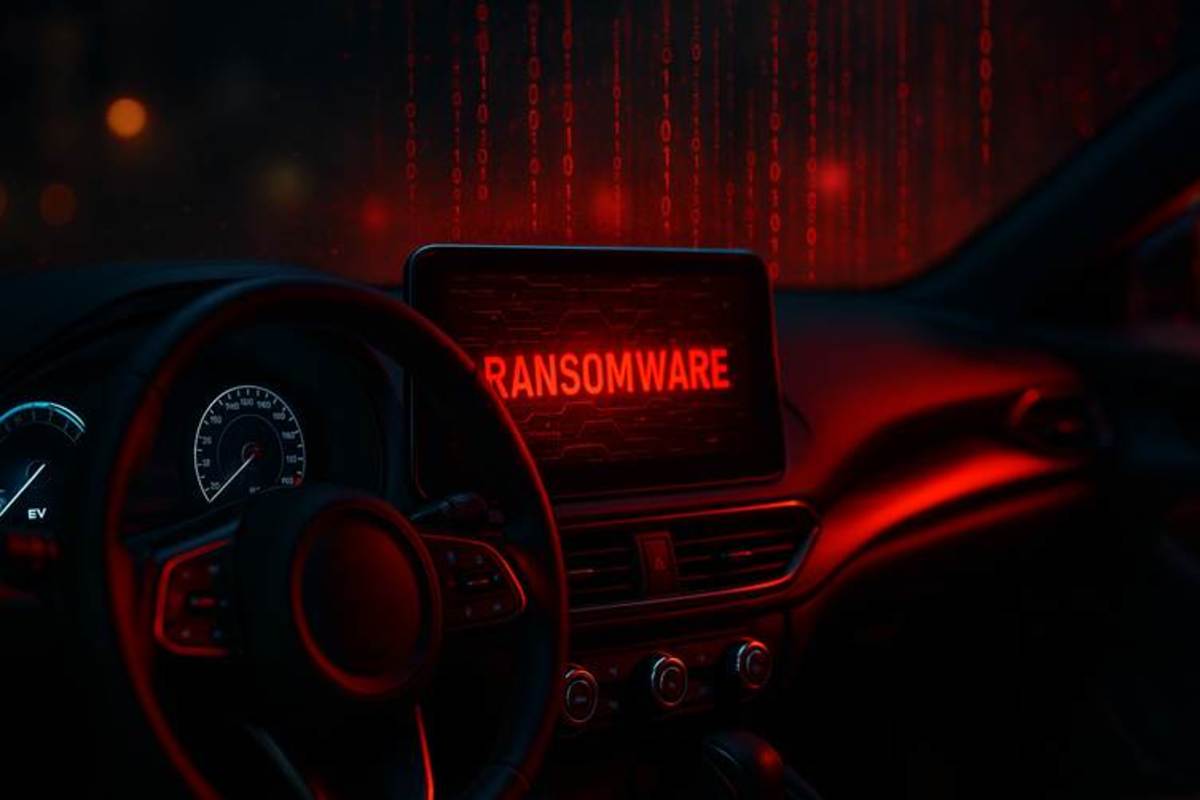Why Car Cybersecurity Can’t Be Ignored
Imagine treating a ticking time bomb as background noise. That’s how many in the automotive industry have approached ransomware. Ransomware now accounts for 45% of all automotive cyber incidents so far in 2025, making it the leading threat to the sector. The scale of these attacks is also increasing: large-scale incidents affecting millions of vehicles more than tripled in 2024, and nearly 60% of all reported cyber events in 2023–2024 were large-scale in nature
There is strong evidence that the number of publicly disclosed automotive ransomware attacks is only a fraction of the true total. Many incidents are never disclosed. 148 publicly disclosed automotive cyber incidents were tracked in just the first quarter of 2025, but cybersecurity experts warn it is just getting started: “The pieces are in place for a transition from today’s manual, car-modding hacks to more harmful and larger-scale attacks,” and that criminal activity on the dark web points to a much broader, largely hidden threat landscape.
In a world where drivers expect more than just horsepower, digital security has become as essential as the engine itself.
The New Threat in the Driver’s Seat
Today’s cars are marvels of connectivity, but this convenience comes with risk. Picture a journalist at a dealership, eyeing rows of sleek sedans. Each keypad and dashboard screen seems harmless—until malware hidden in the firmware threatens to lock down the entire vehicle. That 45% breach statistic isn’t just a number; it’s a warning. What if, the next time you start your car, you’re met with a ransom note instead of the familiar engine hum?
When Code Becomes a Weapon
Ransomware attacks on car manufacturers often start with a weak link—stolen credentials from suppliers or compromised service portals. Once inside, attackers can encrypt vital systems: infotainment, navigation, even the ignition. An encrypted Electronic Control Unit (ECU) can make starting your car impossible until a ransom is paid. Unlike the data breaches of the past, these attacks don’t just steal information—they can bring your car to a standstill.
Vulnerabilities in the Supply Chain
The automotive supply chain is vast and complex, providing more opportunities for cybercriminals. A single phishing email to a small supplier can lead to malicious code being embedded in a firmware update, which then spreads to thousands of vehicles. Compromised update servers can deliver ransomware-laden patches, infecting entire fleets in minutes. Ironically, even the most security-conscious manufacturers can inherit vulnerabilities from distant partners.
Brian Iselin
Everyday Routines, Unusual Risks
Consider your morning routine: coffee in hand, you tap “Start” on your car’s smartphone app—only to find your vehicle locked by ransomware. The cost of negotiating with hackers may exceed typical repair bills, and insurers are still figuring out how to handle these new risks. Meanwhile, online forums buzz with debates over which software updates fix vulnerabilities and which might accidentally introduce new ones. Delayed security patches can leave vehicles exposed for weeks, making every drive a potential gamble.
Trust on the Open Road
Modern vehicles offer dazzling features and seamless connectivity, but these advances come with serious questions. When convenience can so easily turn into coercion, will drivers still trust their cars? On the open highway, does the engine’s roar reassure you—or remind you of the silent code that could one day hold you hostage?
You’re not powerless against this wave of automotive ransomware—there are concrete steps you can take right now to protect yourself and your EV:
- Start by disabling remote access features when you don’t need them.
- Always use strong, unique passwords for your car’s apps and accounts.
- Keep your vehicle’s software and apps updated; patches often fix vulnerabilities before hackers can exploit them.
- Be cautious with Bluetooth, Wi-Fi, and public charging stations.
- Secure your key fob in a signal-blocking pouch.
- Avoid connecting to unfamiliar networks.
- If you add aftermarket gadgets, choose only trusted brands and check their security track record.
- Stay alert for official security updates from your automaker and report any unusual vehicle behavior immediately.
A little digital vigilance goes a long way—taking these steps can help keep your car, your data, and your daily routine safe from cybercriminals.







